Of the seven fields covered by UNESCO Creative Cities Network (UCCN), it is the City of Design that is productive in creativity and enjoys a high reputation in the design industry.
To be approved as a Design City, cities need to meet a number of criteria set by UNESCO. Designated UNESCO Design Cities share similar characteristics such as having an established design industry; cultural landscape maintained by design and the built environment (architecture, urban planning, public spaces, monuments, transportation); design schools and design research centers; practicing groups of designers with a continuous activity at a local and national level; experience in hosting fairs, events and exhibits dedicated to design; opportunity for local designers and urban planners to take advantage of local materials and urban/natural conditions; design-driven creative industries such as architecture and interiors, fashion and textiles, jewelry and accessories, interaction design, urban design, sustainable design.
Currently, there are 40 Design Cities in 30 countries globally, including Berlin in Germany, Shenzhen, Shanghai, Beijing and Wuhan in China, Kobe, Nagoya and Asahikawa in Japan, Buenos Aires in Argentina, Montreal in Canada, Seoul in South Korea, Graz in Austria, Detroit in the USA, Bilbao in Spain, Curitiba, Brasilia and Fortaleza in Brazil, and Muharraq in Bahrain. The stories of Cities of Design will tell you the charm of design.
Introduction: The very first story of the series is underscoring the Design City Shenzhen. Having rapidly developed from a small fishing village to a cosmopolitan city, what are Shenzhen's unique creativity and vitality? Chinas's first City of Design, Shenzhen born? We will unravel the mystery.
Overview: Shenzhen, a City of Innovation
Design Week: Virtual Shenzhen Design Week
Design Awards: The Global Promotion of Advanced Design Thinking
The Construction of Design City: A Hub of Innovation, Entrepreneurship and Creativity with International Influence
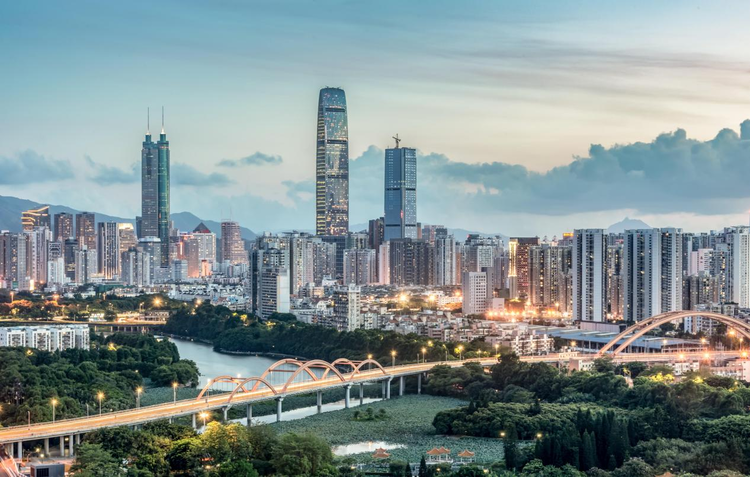
[Photo via 699pic.com]
As a bridgehead for China's reform and opening up, Shenzhen is considered to be the birthplace of the country's modern design concept, a major design hub and one of the leading design cities in China. On December 7th, 2008, Shenzhen was officially designated by UNESCO as China's first and the world's sixth City of Design in the Creative Cities Network. Mr. Abhimanyu Singh, director and representative of the UNESCO Beijing Office at that time, said in an interview that the title demonstrated the outstanding performance Shenzhen delivered in cultural and creative industries. Though he had not yet been to the city in person, he was already acquainted with an undeniably beautiful Shenzhen full of vitality on the radio, television, and in the pictures. He praised that it was a miracle to have such a remarkable achievement for a city with less than 30 years of history. But he also added that to preserve the position, one of the essential tasks for young Shenzhen was to continue absorbing young talents, keeping open-minded and promoting world-class and advanced education about design to make it available to the young.
Shenzhen, a City of Innovation

As a seaside city located in south China, Shenzhen, which used to be an ordinary border town neighbouring Hong Kong, was chosen as China's first special economic zone on August 26th, 1980. The concept of modern Chinese design was gradually created in Shenzhen and has increasingly become a part of the city and its residents. Shenzhen is also a city of innovation. From its birth, innovation is implicit in the city's nature. The city's unique creativity and vitality are embodied everywhere, from the design of the urban development path to the design of the decoration of corner stores.
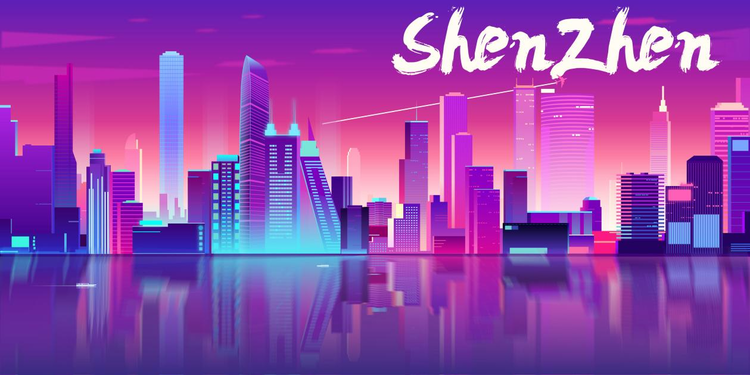
In 2003, Shenzhen took the lead nationwide in establishing a cultural city strategy and decided on the prominent position of culture in the overall development strategy of the city. Five years later in 2008, Shenzhen was designated as a UNESCO City of Design, clarifying the transformation of strategic development goal from promoting manufacturing economy to creative service economy through design. Then piles of products have won top industrial design awards domestically and internationally. It indicated the global community's recognition of Shenzhen's long-standing adherence to the strategy of independent innovation, and developing cultural and creative industries.

Distribution of the Number of Design Enterprises in the Districts of Shenzhen [Photo via szcod.org]
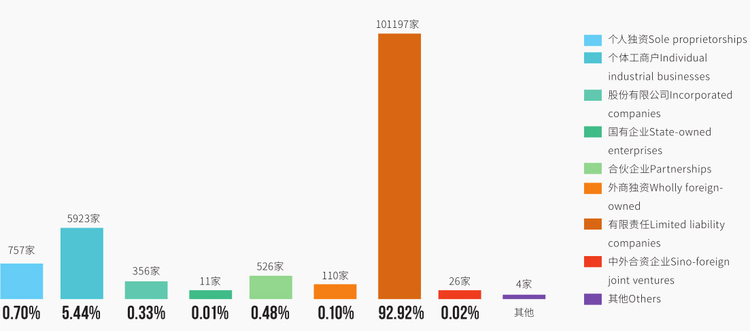
Distribution of the Categories of the Design Enterprises in the Districts of Shenzhen [Photo via szcod.org]
According to the statistical analysis, as of June 30th, 2018, there were 108,910 enterprises in the design industry in Shenzhen. And it took Shenzhen's design companies 36 years to grow from scratch to 100,000. Statistics show that, as time goes on, the types of industries that Shenzhen's design enterprises are involved in have been constantly expanding and the number has been increasing. Design is an important driving force for Shenzhen's transformation from the world's sweatshop to a city of innovation. Shenzhen Design has become a momentum for economic growth of Shenzhen, a bright business card for the city, and an internationally acclaimed city brand. The design industry has become an increasingly powerful starting point for Shenzhen to transform its economic growth mode and achieve innovation-driven development. Nowadays, economics and finance, technological innovation, commercial logistics and other fields in Shenzhen are increasing their popularity and influence internationally and beckoning many strivers.
Virtual Shenzhen Design Week
The slogan that "If you come, you're a Shenzhener" is sourced from the foundation built on the exercise during the 40 years of reform and opening-up of Shenzhen and reflects its openness and inclusiveness. In March 2018, the city was advanced to build stronger time-leading Shenzhen brands with a global vision, and build a global innovative design capital at a high starting point and with high standards. The city also implemented the Shenzhen Brand strategy in depth.
Currently, the design resources in Shenzhen consist of Shenzhen Graphic Design Association (SGDA), Shenzhen Cultural & Creative Industrial Park, T-PARK SZ-HK Film Creative Park, Sino-Finnish Design Park, and other venues or education. As China's first city winning the title of UNESCO City of Design, Shenzhen has organized many design activities for exchange and also several design rewards, including Virtual Design Week, Shenzhen Design for 40 Years and Shenzhen Design Award for Young Talents (SDAY), to bring in the participation of first-class designers extensively and provide more inspirations.

[Photo via szcod.org]
Shenzhen Design for 40 Years, an exhibition as one of the key sections of Shenzhen Design Week themed on Virtual Design | Infinite Creativity, was held in 2020. The exhibition aims to review the remarkable achievements of Shenzhen in the field of design in the past 40 years and ponder upon the future design scene in Shenzhen. A special virtual exhibition named "Shenzhen Design for 40 Years: The Power of the Era" was set up to display "Shenzhen's mission bestowed by era, the design empowered by Shenzhen". Song Boyuan, president of Shenzhen Graphic Design Association and chief curator of the exhibition, hoped to orchestrate an "eternal cloud exhibition".
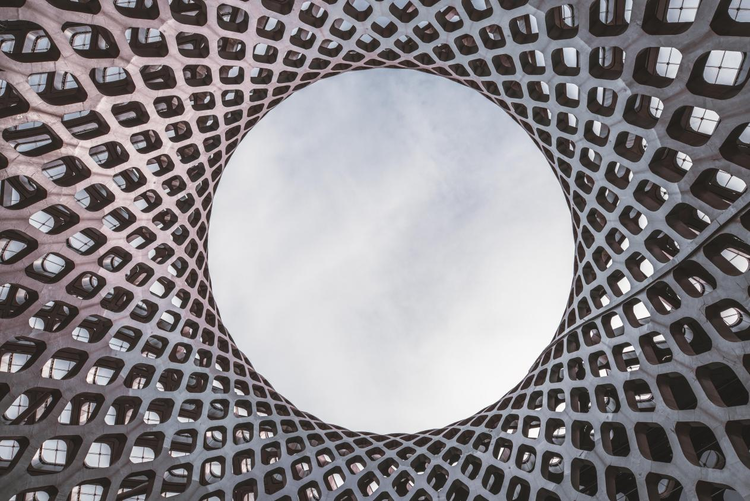
In addition, in the Design Week, the organizing committee of the Shenzhen Design Week set up a special edition for 2020 Shenzhen Global Design Award—Anti-Coronavirus Product Design Award, with a total prize of two million yuan, inviting designers and design companies around the world to enter to find more and better solutions to combat the Covid-19 pandemic. This attempt echoes with the permanent theme of SDA: Design for Sustainability. Initiated in 2017, Shenzhen Design Week has become an important window and platform for the design industry in Shenzhen to go global. It is not only a professional event for the design industry but also an international design-themed gathering open to the public, helping design brands born in Shenzhen go out to the world.

[Photo via szcod.org]
Design Awards: The Promotion of Advanced Design Thinking Globally
In addition to virtual Shenzhen Design Week, the Shenzhen Design Award for Young Talents (SDAY) is another key event of the City Culture Menu in Shenzhen. The SDAY is administered by the Shenzhen City of Design Promotion Office, organized by the Shenzhen City of Design Promotion Association (SDPA) in cooperation and collaboration with the UNESCO Creative Cities Network to reward outstanding young designers within the 246 UNESCO Creative Cities worldwide. The award invites many biggest names to be jury members and builds a fair and impartial platform so that those young designers will be enabled to unleash creativity under innovation-studded and inclusive circumstances.
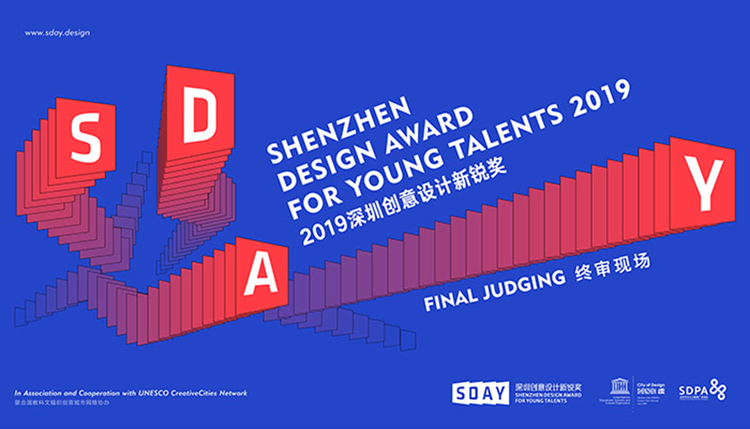
[Photo via szcod.org]
In 2018, the Shenzhen Global Design Award (SDA) was established by Design City Shenzhen. It becomes an additional internationally professional design award following the SDAY in Shenzhen. The SDA targets 5 categories: Industrial & Product, Communication, Architecture, Interior and Fashion. It aims to recognize and reward outstanding design works with creativity and promote advanced design thinking.
A Hub of Innovation, Entrepreneurship and Creativity with International Influence

[Photo via en.unesco.org/creative-cities]
Over the past 40 years, a new development paradigm and a new format of "Design Plus" have taken shape in Shenzhen, including "Design Plus Technology", "Design Plus Culture", "Design Plus Finance" and "Design Plus Creativity", which have brought in a stream of enterprises and talents in the field of culture and creativity, and also innovative and cross-categories "Shenzhen Design". For more than a decade since the designation, Shenzhen has engaged in international exchanges as a Design City. Starting out as the world's factory, to the upgrading of its manufacturing, and finally to a city of innovation, "Shenzhen Design" has played a pivotal role. According to the data released by Shenzhen Art & Design Alliance (SADA), Shenzhen is home to over 200,000 designers now. In 2019, the design industry in Shenzhen had an overall output exceeding 30 billion yuan, increasing by 18.5% year on year, which further drove lower-stream industrial output by more than 100 billion yuan. Despite the impact of the Covid-19 pandemic, the industry continued to grow in 2020.
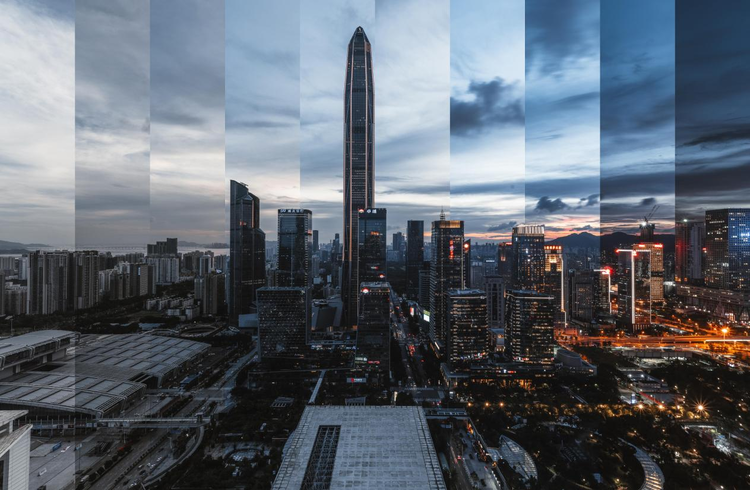
In a creative atmosphere, the Shenzhen, Culture, Creative & Design Association (SCCDA) was set up on August 4th, 2021, aiming to unite, associate with and serve the cultural and creative industry and design industry in Shenzhen, to vigorously transform and upgrade industries, strengthen the international promotion of Shenzhen as a "City of Design" and an international city worldwide, and increase the city's influence in the "Belt and Road Initiative". The SCCDA will go all out to assist the organization of the events including Shenzhen Design Week, the SDA and the SDAY. It will not only further enhance global and domestic exchanges and cooperation between creativity and design but also advance the development of the Shenzhen Special Economic Zone and the Shenzhen Pioneering Demonstration Zone.
Seizing the major historical opportunity brought by the two zones, Shenzhen is now embarking on another historic mission—by 2025, Shenzhen will turn into a hub of innovation, entrepreneurship and creativity with international influence. How can Shenzhen catch the eyes of the whole world? By arts, technology or design? Some designers put forward that Shenzhen should draw on global wisdom to build itself into an international highland that global talents prefer. Internationally renowned British architect Keith Griffiths held that Shenzhen is the pacesetter for future city life. According to his plan for C FutureCity, the city will gather well-known designers from all around the world and organically combined art, nature and technology, making cultural and historical factors interpenetrate into each other; at the same time, it will cooperate with more partners to conduct creative experiments on future space.